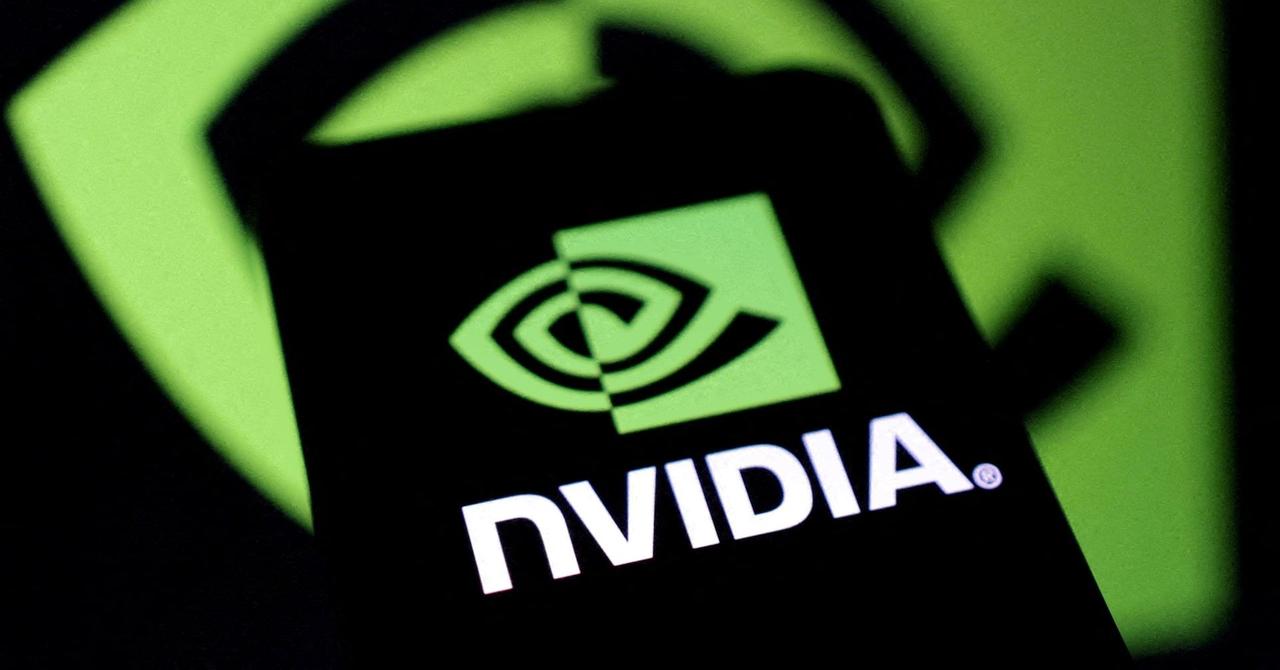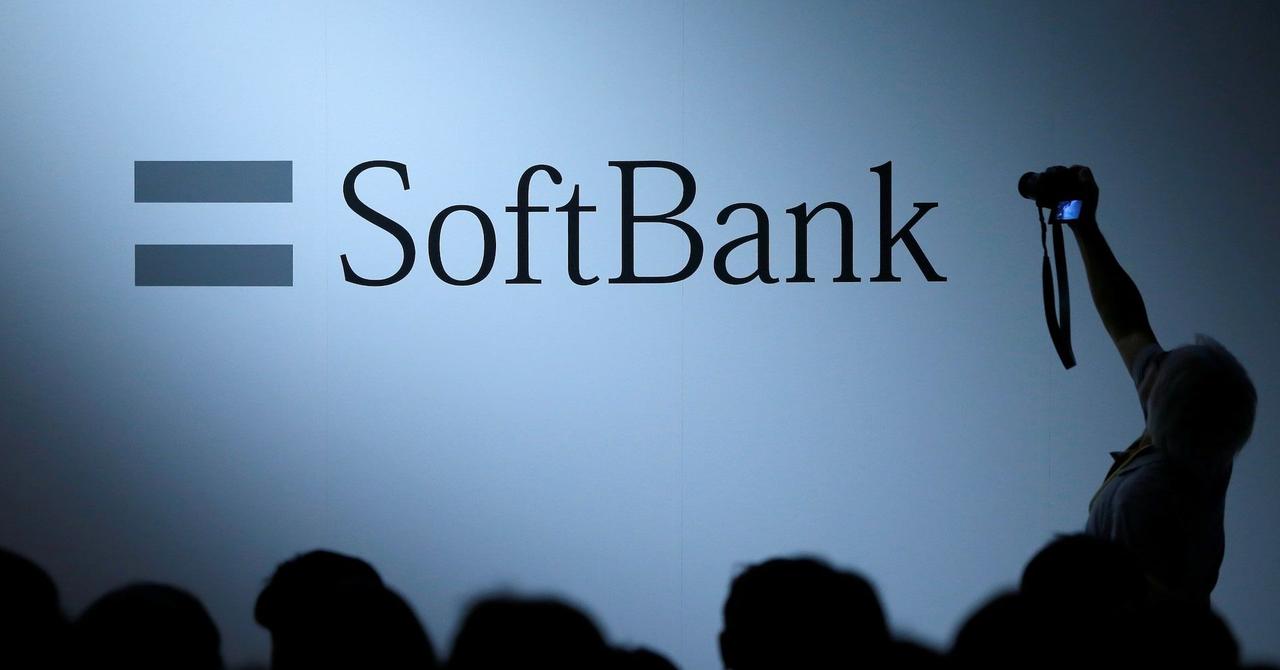Nvidia's Potential to Reach $50 Trillion Valuation: Analyzing the AI Giant's Future
4 Sources
4 Sources
[1]
Could Nvidia Really Reach a $50 Trillion Valuation? One Successful Tech Investor Thinks So. | The Motley Fool
One technology investor thinks so. In fact, he thinks there's a lot of room to run. Last Sunday, investor James Anderson of Lingotto Investment Management in London told the Financial Times he thinks there's a chance Nvidia reaches a $50 trillion market cap over the next decade. That would mark a 16 times increase from today's levels, which is already the result of blockbuster performance over the past two years. That seems pretty implausible. After all, a $50 trillion valuation would be nearly twice the current gross domestic product (GDP) of the U.S., which reached $27.4 trillion in 2023, and it's almost three times the GDP of China at $17.8 trillion. Of course, U.S. GDP, which is the sum total of all personal consumption, business investment, government spending, and net exports, may not be a good comparison to market cap. GDP accounts for revenue, while a market cap is a multiple of a company's revenue or earnings. Yet even in a scenario in which U.S. GDP rises 50% over the next decade, the $50 trillion market cap scenario suggests Nvidia's revenue would make up a rather large portion of U.S. GDP, and also for it to trade at a high price-to-sales ratio, suggesting it maintains sky-high profitability, too. But Anderson was a former partner at Baillie Gifford, which is one of the biggest growth-oriented mutual funds in the world, and was an early investor in Amazon and Tesla. So his opinion shouldn't necessarily be discounted. Let's dive into his assumptions. Anderson, obviously, sees the current artificial intelligence boom not as a short-term blip but rather as transformative for society. Anderson estimates today's demand growth rate for AI data centers is about 60%, and he merely extrapolates that out 10 years. Furthermore, he also sees no reason Nvidia's margins should contract, even though Nvidia's adjusted net margins have surged to a sky-high 58.5% last quarter, which is really, really high for a chipmaker. If that scenario plays out, Anderson sees Nvidia earnings growing to $1,350 per share and free cash flow of $1,000 per share in 10 years. At a future 20 times free cash flow multiple, that would put the stock at $20,000 per share, or a $49 trillion market cap at today's share count. While Anderson admits this scenario is not his base case, in the interview, he gives this $49 trillion scenario a 10% to 15% probability. Anderson's projections could seem reasonable to some. After all, other industry participants have projected huge growth rates for AI chips in the immediate future. Nvidia's manufacturing partner, Taiwan Semiconductor Manufacturing (TSM 0.28%), has previously guided that AI chips will grow at a 50% average growth rate for the next five years. And on its last earnings conference call with analysts, TSMC management also noted it would grow its CoWoS advanced packaging capacity for AI applications by 60% for the next four or five years. Currently, that capacity is in shortage right now and needs to catch up to the market. But to grow at that rate for another five years after that, on a base of revenue that will be considerably larger, is a much, much bigger ask. Usually, the law of large numbers states that as a company grows, it gets harder to maintain the same rate of growth merely because a company would get so big in relation to its industry or the economy at large. And this is why Anderson's numbers seem implausible to this investor. Because while a 60% growth rate in AI chips, from very minimal numbers last year, would get one to about $400 billion in AI chip revenue in 2027, another 60% annual growth for another five years after that would bring overall AI chip revenue to $4.1 trillion by 2033 -- more than 10 times the already-large AI chip market forecast by 2027. For reference, many people who are optimistic on semiconductors think the entire semiconductor industry will reach only about $1 trillion by 2030. Moreover, there is more competition coming soon for Nvidia, not only from its merchant chipmaker competitors ramping up their own accelerators this year for the first time, but also from cloud giants increasingly investing in their own in-house AI chips. These chips will probably have much lower prices. With customers paying currently through the nose for Nvidia chips and probably side-eyeing Nvidia's sky-high margins, they will no doubt be a tremendous push to look for cheaper alternatives running on open-source software. Given Nvidia's super-high margin, there's lots of room for other tech giants to undercut the AI giant on pricing and still do well. No doubt, these competitors are well behind Nvidia at the moment, but with the whole of the technology industry looking for more cost-efficient ways to run AI, I find it unlikely Nvidia will be able to maintain these gigantic margins forever. Given its current first-mover status in AI, Nvidia may continue to be a solid stock. But $50 trillion? Never say never, but that appears fantastical.
[2]
Can Nvidia Really Become a $50 Trillion Company? | The Motley Fool
A noted Wall Street investor believes the tech giant could become a massive corporation in the long run. Nvidia's (NVDA -0.77%) stunning rally since the beginning of 2023 has made it one of the most valuable companies in the world, with a market capitalization of $3 trillion. The graphics-card specialist is now the third-most-valuable company globally, but an early investor in Amazon and Tesla believes that Nvidia still has lots of room for growth. Tech investor James Anderson, who was a former partner at investment management firm Baillie Gifford, believes that there's a 10% to 15% probability of Nvidia's market cap jumping to a whopping $49 trillion in the next 10 years. That's a very ambitious forecast, given that the overall market cap of companies in the S&P 500 index stands at just over $46.5 trillion. Let's see why Anderson believes that a market cap of almost $50 trillion could be a possibility for Nvidia, and check if there could be even a slim chance of this possibility turning into reality. Anderson's $50 trillion market-cap estimate is based on Nvidia's data center revenue growing at 60% over the next decade. In fiscal 2024 (which ended in January this year), Nvidia's data center revenue shot up 217% year over year to $47.5 billion on the back of the booming demand for its artificial intelligence (AI) chips. Applying a 60% annual growth rate to that number over the next decade would pin Nvidia's data center revenue at a whopping $5.2 trillion in fiscal 2034. Hitting a $50 trillion market cap, based on the data center segment's revenue alone, would mean that Nvidia would have to trade at around 10x sales at that time. That would be a discount to the company's current price-to-sales ratio of 37, indicating that Nvidia could attain the impressive market cap that Anderson is forecasting even if it trades at a significant discount after 10 years. However, achieving $5 trillion in data center revenue on the basis of the AI chip market alone doesn't seem even remotely possible. That's because the market for AI chips is expected to generate $257 billion in revenue in 2033, even after clocking a healthy compound annual growth rate (CAGR) of 24%. Nvidia's data center business benefited from the surging demand for AI chips, a market where it's the leading player with a market share of over 90%. Even if Nvidia continues to exercise such dominant control in this market, it's unlikely that its data center business will become big enough in the long run to help it achieve a $50 trillion market cap. What's more, Nvidia estimated that its total addressable market stood at $1 trillion a couple of years ago. Assuming it can corner all of that end-market opportunity in the next decade and trades at 8x sales in 2034, in line with the U.S. technology sector's average, its market cap may hit $8 trillion, at most. Achieving Anderson's market-cap estimate seems like an impossibility for Nvidia (at least for now). At the same time, however, we shouldn't ignore the fact that the semiconductor giant's huge addressable market means it could end up delivering significant upside in the future. Nvidia's revenue during the trailing 12 months stands at just under $80 billion. So the total addressable market that the company is sitting on suggests it hasn't scratched even 10% of its revenue opportunity. Also, I mentioned earlier that the AI chip market that Nvidia dominates is set for robust growth over the next decade. However, this is just one of many lucrative growth opportunities for Nvidia. Fast-growing markets such as AI computers, digital twins, and connected cars are additional growth drivers that could help the company sustain its impressive growth in the future. All this explains why analysts are expecting Nvidia to achieve a healthy earnings-growth rate of 46% for the next five years. However, there's a good chance that it could exceed those expectations, considering its impressive share in the AI GPU and the gaming GPU markets, which gives Nvidia the ability to command stronger prices. Moreover, Nvidia is undervalued with respect to the growth that it's forecast to deliver. That's why investors looking to buy a growth stock can still consider buying this chipmaker, as it seems built for robust long-term upside even if it doesn't hit the lofty $50 trillion market cap in the long run, as Anderson predicts.
[3]
Could Nvidia Really Reach a $50 Trillion Valuation? One Successful Tech Investor Thinks So.
The talk of the town, stock market-wise, has no doubt been artificial intelligence chip leader Nvidia (NASDAQ: NVDA). But after soaring 532% over the past three years and with its market cap exceeding $3 trillion, is there any more room for this AI darling to run higher? Last Sunday, investor James Anderson of Lingotto Investment Management in London told the Financial Times he thinks there's a chance Nvidia reaches a $50 trillion market cap over the next decade. That would mark a 16 times increase from today's levels, which is already the result of blockbuster performance over the past two years. That seems pretty implausible. After all, a $50 trillion valuation would be nearly twice the current gross domestic product (GDP) of the U.S., which reached $27.4 trillion in 2023, and it's almost three times the GDP of China at $17.8 trillion. Of course, U.S. GDP, which is the sum total of all personal consumption, business investment, government spending, and net exports, may not be a good comparison to market cap. GDP accounts for revenue, while a market cap is a multiple of a company's revenue or earnings. Yet even in a scenario in which U.S. GDP rises 50% over the next decade, the $50 trillion market cap scenario suggests Nvidia's revenue would make up a rather large portion of U.S. GDP, and also for it to trade at a high price-to-sales ratio, suggesting it maintains sky-high profitability, too. But Anderson was a former partner at Baillie Gifford, which is one of the biggest growth-oriented mutual funds in the world, and was an early investor in Amazon and Tesla. So his opinion shouldn't necessarily be discounted. Let's dive into his assumptions. How Anderson gets there Anderson, obviously, sees the current artificial intelligence boom not as a short-term blip but rather as transformative for society. Anderson estimates today's demand growth rate for AI data centers is about 60%, and he merely extrapolates that out 10 years. Furthermore, he also sees no reason Nvidia's margins should contract, even though Nvidia's adjusted net margins have surged to a sky-high 58.5% last quarter, which is really, really high for a chipmaker. If that scenario plays out, Anderson sees Nvidia earnings growing to $1,350 per share and free cash flow of $1,000 per share in 10 years. At a future 20 times free cash flow multiple, that would put the stock at $20,000 per share, or a $49 trillion market cap at today's share count. While Anderson admits this scenario is not his base case, in the interview, he gives this $49 trillion scenario a 10% to 15% probability. Anderson's projections could seem reasonable to some. After all, other industry participants have projected huge growth rates for AI chips in the immediate future. Nvidia's manufacturing partner, Taiwan Semiconductor Manufacturing (NYSE: TSM), has previously guided that AI chips will grow at a 50% average growth rate for the next five years. And on its lastearnings conference callwith analysts, TSMC management also noted it would grow its CoWoS advanced packaging capacity for AI applications by 60% for the next four or five years. Currently, that capacity is in shortage right now and needs to catch up to the market. But to grow at that rate for another five years after that, on a base of revenue that will be considerably larger, is a much, much bigger ask. Usually, the law of large numbers states that as a company grows, it gets harder to maintain the same rate of growth merely because a company would get so big in relation to its industry or the economy at large. These numbers seem unlikely And this is why Anderson's numbers seem implausible to this investor. Because while a 60% growth rate in AI chips, from very minimal numbers last year, would get one to about $400 billion in AI chip revenue in 2027, another 60% annual growth for another five years after that would bring overall AI chip revenue to $4.1 trillion by 2033 -- more than 10 times the already-large AI chip market forecast by 2027. For reference, many people who are optimistic on semiconductors think the entire semiconductor industry will reach only about $1 trillion by 2030. Moreover, there is more competition coming soon for Nvidia, not only from its merchant chipmaker competitors ramping up their own accelerators this year for the first time, but also from cloud giants increasingly investing in their own in-house AI chips. These chips will probably have much lower prices. With customers paying currently through the nose for Nvidia chips and probably side-eyeing Nvidia's sky-high margins, they will no doubt be a tremendous push to look for cheaper alternatives running on open-source software. Given Nvidia's super-high margin, there's lots of room for other tech giants to undercut the AI giant on pricing and still do well. No doubt, these competitors are well behind Nvidia at the moment, but with the whole of the technology industry looking for more cost-efficient ways to run AI, I find it unlikely Nvidia will be able to maintain these gigantic margins forever. Given its current first-mover status in AI, Nvidia may continue to be a solid stock. But $50 trillion? Never say never, but that appears fantastical. The Motley Fool Stock Advisor analyst team just identified what they believe are the 10 best stocks for investors to buy now... and Nvidia wasn't one of them. The 10 stocks that made the cut could produce monster returns in the coming years. Consider when Nvidia made this list on April 15, 2005... if you invested $1,000 at the time of our recommendation, you'd have $757,001!* Stock Advisor provides investors with an easy-to-follow blueprint for success, including guidance on building a portfolio, regular updates from analysts, and two new stock picks each month. The Stock Advisor service has more than quadrupled the return of S&P 500 since 2002*. John Mackey, former CEO of Whole Foods Market, an Amazon subsidiary, is a member of The Motley Fool's board of directors. Billy Duberstein and/or his clients have positions in Amazon and Taiwan Semiconductor Manufacturing. The Motley Fool has positions in and recommends Amazon, Nvidia, Taiwan Semiconductor Manufacturing, and Tesla. The Motley Fool has a disclosure policy. The views and opinions expressed herein are the views and opinions of the author and do not necessarily reflect those of Nasdaq, Inc.
[4]
Nvidia revenue can 10x to $1 trillion by 2030, says Fundstrat By Investing.com
Nvidia's (NVDA) revenue can surge tenfold from here and hit $1 trillion by the end of the decade, said analysts at Fundstrat Global Advisors. "Nvidia's revenue could be a trillion dollars by the end of the decade and Nvidia's revenues are $100 billion right now. So Nvidia (NASDAQ:NVDA) itself can be a 10x," the analysts mentioned in an interview with investing journalist Natalie Brunell. The comments come in response to a question about the previous prediction that the S&P 500 could surge as high as 15,000 by 2030. They explain that the world is running out of prime-age workers, leading to a shift where wages are increasingly paid to companies that produce automated solutions. This trend could funnel nearly $4 trillion annually into the S&P 500 by 2030, the analysts noted. They brought up the 2008 financial crisis as a historical reference, highlighting how S&P earnings rebounded from $60 to $280 per share in 14 years, despite initial skepticism from some analysts. They believe similar growth is achievable due to demographic shifts and increased automation spending. "S&P earnings are going to be over $1,000 per share in the near future," they stated. As companies like Nvidia capitalize on AI, their revenues could soar, reflecting the broader economic shift from human labor to machine output. The analysts emphasize the importance of looking at long-term trends, noting that past predictions often underestimated the market's potential for recovery and growth. Nvidia continues to be one of the biggest drivers of the stock market's ongoing bull run, with the chipmaker's shares surging nearly 150% since the start of 2024. That marks a broad outperformance compared to the S&P 500, which added 16.5% during that period.
Share
Share
Copy Link
Nvidia, the AI chip leader, is at the center of speculation about its future valuation. Some investors believe it could reach $50 trillion, while others are more cautious. This story examines the various perspectives and factors influencing Nvidia's potential growth.

The $50 Trillion Valuation Debate
Nvidia, the leading artificial intelligence (AI) chip manufacturer, has become the subject of intense speculation regarding its future valuation. Some investors and analysts are projecting an astronomical figure of $50 trillion, which has sparked a heated debate in the tech and finance communities
1
.The Bull Case: Cathie Wood's Optimistic Outlook
Cathie Wood, the founder and CEO of Ark Invest, known for her bullish stance on disruptive technologies, has made headlines with her prediction. Wood believes that Nvidia could potentially reach a $50 trillion valuation by 2030
2
. Her optimism is rooted in the exponential growth of AI and Nvidia's dominant position in the market.Fundstrat's Revenue Projection
Adding fuel to the bullish sentiment, Fundstrat, a market research firm, has projected that Nvidia's revenue could increase tenfold to $1 trillion by 2030
4
. This projection is based on the rapid adoption of AI technologies across various industries and Nvidia's strong market position.Challenges and Skepticism
Despite the optimistic projections, many experts urge caution. Reaching a $50 trillion valuation would require Nvidia to grow its market cap by about 40% annually for the next six years, a feat that has historical precedents but is extremely rare
3
.Factors Influencing Nvidia's Growth
Several factors could impact Nvidia's growth trajectory:
- AI Market Expansion: The continued rapid growth of the AI market is crucial for Nvidia's success.
- Competition: Increased competition from other chip manufacturers could affect Nvidia's market share.
- Regulatory Environment: Potential regulations in the AI industry could impact Nvidia's growth.
- Global Economic Conditions: Economic factors such as inflation and interest rates could influence investor sentiment.
Related Stories
Current Market Position
As of July 2024, Nvidia's market capitalization stands at approximately $1.2 trillion, making it one of the most valuable companies globally
1
. The company's stock has seen significant growth in recent years, driven by the AI boom and its dominant position in the GPU market.Investor Perspectives
While some investors are excited about Nvidia's potential, others advise a more measured approach. The extreme valuation projections have led to discussions about the sustainability of such growth and the potential for a market bubble in AI-related stocks
2
.As the AI revolution continues to unfold, Nvidia remains at the forefront, with its future valuation being a topic of intense interest and speculation in the investment community. Whether the company can achieve the lofty $50 trillion valuation remains to be seen, but its impact on the tech industry and global markets is undeniable.
References
Summarized by
Navi
[1]
[3]
Related Stories
Nvidia's Potential $50 Trillion Market Cap: A Tech Investor's Bold Prediction
16 Jul 2024

Nvidia's AI Dominance Challenged: Analysts Predict $4-10 Trillion Valuation Despite DeepSeek Scare
07 Feb 2025•Technology

Nvidia Reaches Historic $4 Trillion Market Valuation, Driven by AI Boom
10 Jul 2025•Business and Economy

Recent Highlights
1
Meta acquires Manus for $2 billion, adding revenue-generating AI agents to its platforms
Business and Economy

2
Nvidia locks in $20 billion Groq deal, securing AI chip rival's technology and talent
Business and Economy

3
Geoffrey Hinton warns AI job replacement will accelerate in 2026 as systems gain new capabilities
Technology





